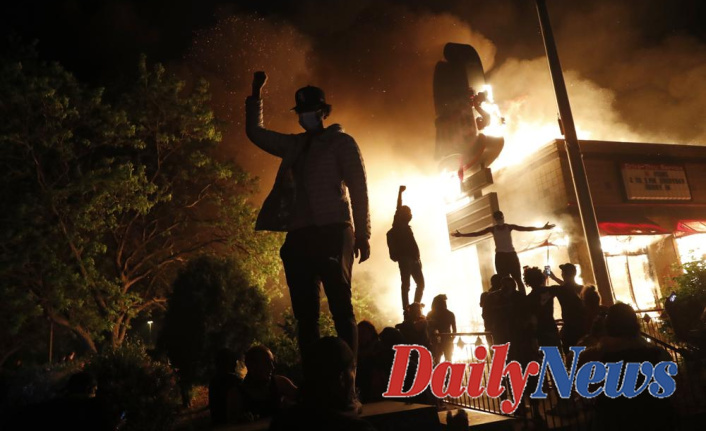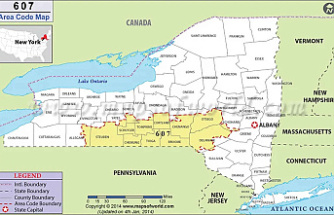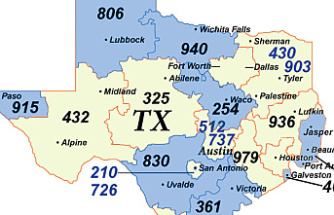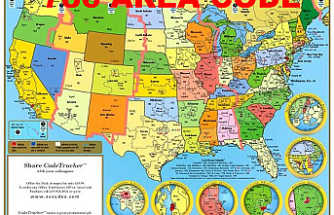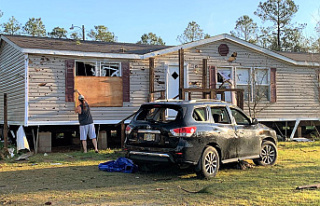There was a lack clear leadership and confusion about who was legitimate and who was peaceful.
A report by Wilder Research was released Thursday by the Department of Public Safety. It stated that the state had set up a multi-agency command centre too late, four days after Floyd's death. The report stated that the center was "chaotic" and had no clear command chain, while Minneapolis continued to run its own emergency operations center using competing law enforcement strategies.
Floyd, a Black man, was shot to death by Derek Chauvin, a former Minneapolis officer. He pressed his knee against Floyd for nine and a quarter minutes, while Floyd lay face down on the ground. Video from a witness showed Floyd repeatedly saying that he couldn’t breathe before finally going silent and stopping moving.
Protests erupted around the world after the killing, including in Minneapolis. Some of the Minneapolis protests turned violent when businesses and even a police station were vandalized and set on fire.
According to the report, the unrest was not planned and caused overextension of local and state agencies.
Many calls for assistance were not answered by local police or emergency responders. Numerous state agencies and the National Guard were called in, but they weren't experienced in managing large-scale civil unrests over a prolonged period of time. The National Guard was also not mobilized in time.
According to the report, several local agencies were not following the same rules of engagement. A lack of communication also led to some communities and businesses feeling that they were not being protected and to take matters into their own hands . Some people viewed the law enforcement response to be escalating.
It also identified some strengths. It found that officials held many informative press conferences and acknowledged the legitimate concerns of the community following Floyd's death. It noted that mobile force units, which were small and mobile, had been effective in dealing with unrest in many locations. A curfew when enforced was also recommended by the report.
This report examined the state’s actions between May 26 and June 7, 2020. It included 20 recommendations for improving the state’s response to civil unrest, as well as ways to prevent it from happening again.
One recommendation is to quickly set up a command centre and establish a clear chain or command. Another way to avoid escalate situations is to keep riot gear on hand, but away from the eyes of law enforcement officers unless they are in imminent danger.
According to the report, Minnesota must do more to reduce tensions between law enforcement agencies and communities and must have a deeper sense of humanity -- especially for Black Minnesotans -- when it responds to civil unrest.
According to it, many community members and business owners claimed that racism and discrimination against Black Minneapolis residents, particularly racist practices by the Minneapolis Police Department, led to unrest.
The report concluded that further research and evaluation were needed to determine the role of racism in law enforcement responses for civil unrest, and to identify additional steps to address community distrust of state government.
To prevent future unrest, one key recommendation was that the state lead efforts to reimagine police and community safety and engage communities in law enforcement oversight.
John Harrington, Public Safety Commissioner, wrote to Gov. Tim Walz wrote Wednesday that the unrest was unexpected and unprecedented. He stated in a letter to the governor that his agency had already made changes to improve communication with the police and accountability and some of the recommendations from the report have been implemented.
Harrington also called for $300 million in public safety funding for local governments. He said the money could be used for addressing some of the issues highlighted in the report. This includes investing in community policing and creating diverse police forces.
Teddy Tschann, Walz's spokesperson, stated that it was "imperative" for lawmakers to approve funding as part the governor’s comprehensive public safety program. Tschann stated that Walz reviewed the report and the progress report from Harrington. He and state leaders will "take a close look" at the findings to inform future work.
An earlier in the month was harshly critiqued and contained several recommendations. These included improving police training for crowd control tactics. Sarah McKenzie, a city spokeswoman, said that the city leaders are focusing on implementing the recommendations in that report and are currently reviewing Thursday's report.
Chauvin was convicted of murder and manslaughter . He also pleaded guilty to Floyd's civil rights violations in federal court. Three more former officers were also convicted on federal civil rights violations. They are currently awaiting trial for state charges of aiding or abetting murder and manslaughter.
___

